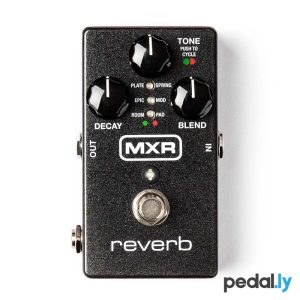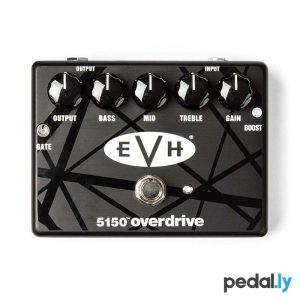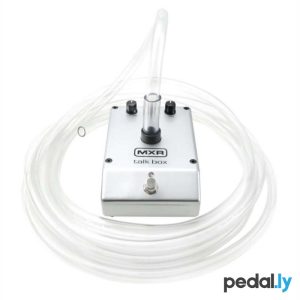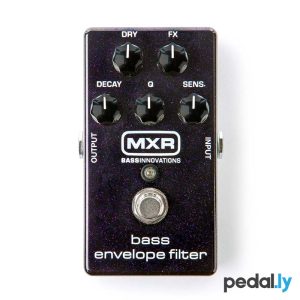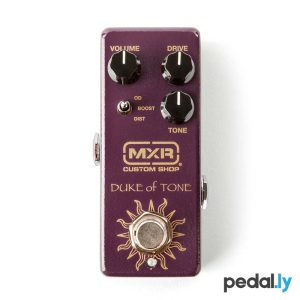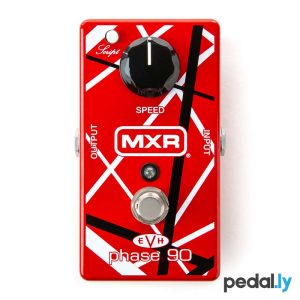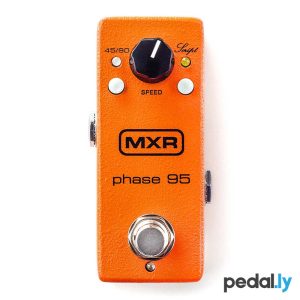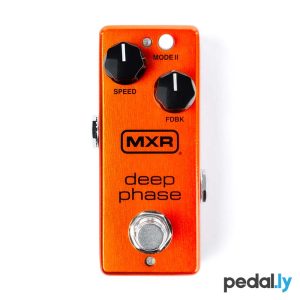MXR | A HISTORY OF INNOVATION
Whether it’s a Phase 90, the staple work horse carbon copy, any Eddie Van Halen pedal or the go to distortion+, MXR is a huge name in the guitar pedal board world.
Little do many people know that the original MXR was a short lived venture.
Starting from humble beginnings in Rochester, NY Keith Barr and his business partner Terry Sherwood launched an audio repair shop where they were in awe of how many awful guitar stomp box options were available to players.
They vowed to give guitar players something better. Rugged, roadworthy, cool looking and best of all sounds that were many time not available to the new guitarist in order to propel guitarists to find new tones and feel. MXR was born in the early 70’s with a overwhelming success.
With a few dozen Phase 90s made in a U.S. basement in hand, Keith and Terry hawked their wares from the back of a car, at gigs, anywhere an audience would checkout their new pedals.
As the company grew MXR offered more pedals such as the Distortion +, the DynaComp® Compressor and the Blue Box® Octave Fuzz. Soon Keith and Terry were cranking out thousands of stompboxes across the globe.
Soon guitarists everywhere had the multi-colored tanks on their boards signifying the future of the limitless possibilities of this new breed of pedals.
MXR became synonymous with classic recordings such as those from rock giants Led Zeppelin, The Rolling Stones, Van Halen, Jimmy Page, Ozzy Osbourne and more.
MXR’s signature intuitive, simple to use, bullet-proof tank quality married to amazing tone caused a sensation in the pedal world allowing players to reproduce their sounds on the road just as they had in the studio.
Taking cues from other newer companies entering the market in the early 80s, MXR started adding LEDs and A/C adaptor jacks to their pedals. A run of the Series 2000 saw FET Switching and dual LED indicators coupled with contoured, all medal chassis. Many of the Series 2000 had dual outputs with their own distinct sounds.
As rack units became popular from manufacturers in Japan, MXR jumped into that market with a host of rack effects ranging from a 15-Band Graphic EQ, Pitch Transposers and a Flanger/Doubler.
In 1983 MXR even introduced one of the first multi-effect rack units for guitar and bass, the Omni. The Omni was a simple effects unit at the time containing sustain, delay, equalization, flanger and chorus.
As with all the changes in the 80s quickly overtaking products from the 60s – 70s; MXR found itself struggling to maintain the bright spot in the guitar universe and unfortunately closed its doors in 1984 up against a host of new competition.
Only a short three years later in 1987, Jim Dunlop bought the MXR licensing rights and currently manufactures reissues of some of the classic MXR pedals.Dunlop has created ned models under the MXR name since its acquisition of MXR.
Featured In This Article
-
MXR Reverb Pedal (M300)
$235.99 Add to cart -
MXR Poly Blue Octave Pedal (M306)
$235.99 Add to cart -
MXR EVH 5150 Overdrive Pedal (EVH5150)
$209.99 Add to cart -
MXR Talk Box Pedal (M222)
$209.99 Add to cart -
MXR Bass Envelope Filter Pedal (M82)
$179.99 Add to cart -
MXR Tremolo Pedal (M305)
$179.99 Add to cart -
MXR Duke of Tone Overdrive Pedal (CSP039)
$159.99 Add to cart -
MXR Uni-Vibe Chorus Vibrato Pedal (M68)
$159.99 Add to cart -
MXR Timmy Overdrive Pedal (CSP027)
$159.99 Add to cart -
MXR Carbon Copy Analog Delay Pedal (M169)
$159.99 Add to cart -
MXR Analog Chorus (M234)
$139.99 Add to cart -
EVH Phase 90 (EVH90)
$129.99 Add to cart -
MXR Phase 95 (M290)
$115.99 Add to cart -
MXR Phase 90 (M101)
$99.99 Add to cart -
MXR Deep Phase Pedal (M279)
$89.99 Add to cart

